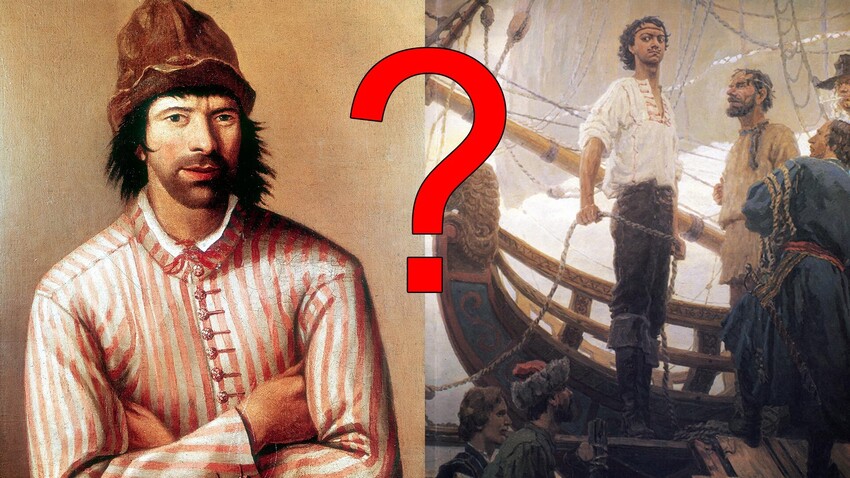
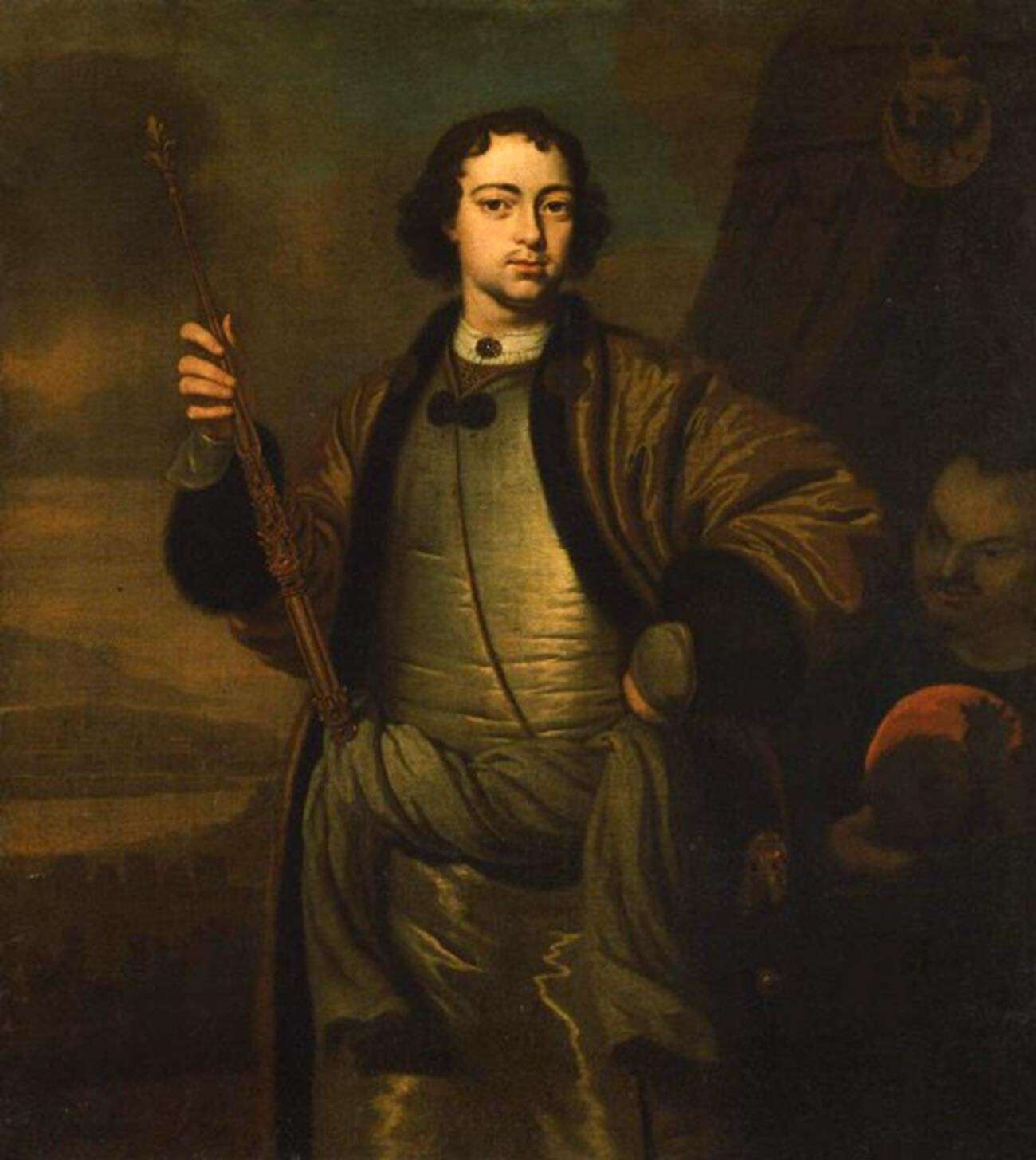
"Portrait of Peter the Great," circa 1697, Pieter van der Werff
Pieter van der WerffPeter’s harsh and abrupt departure from the traditions Russia practiced for centuries made Russian people believe that their “original” tsar had been replaced by someone else after his famous European voyage, the so-called ‘Great Embassy of 1697-1698’. The documents of the Privy Chancellery (state security during Peter’s times) prove that many people in Russia were dissipating this rumor: instead of the “real”, pious Russian tsar, some German spy returned to Russia.
Although gripping, this legend has no base to it, as all Peter’s movements and trips were recorded by multiple witnesses from his entourage, as well as foreign people in Europe. Peter Romanov traveled to Europe and came back in one piece.
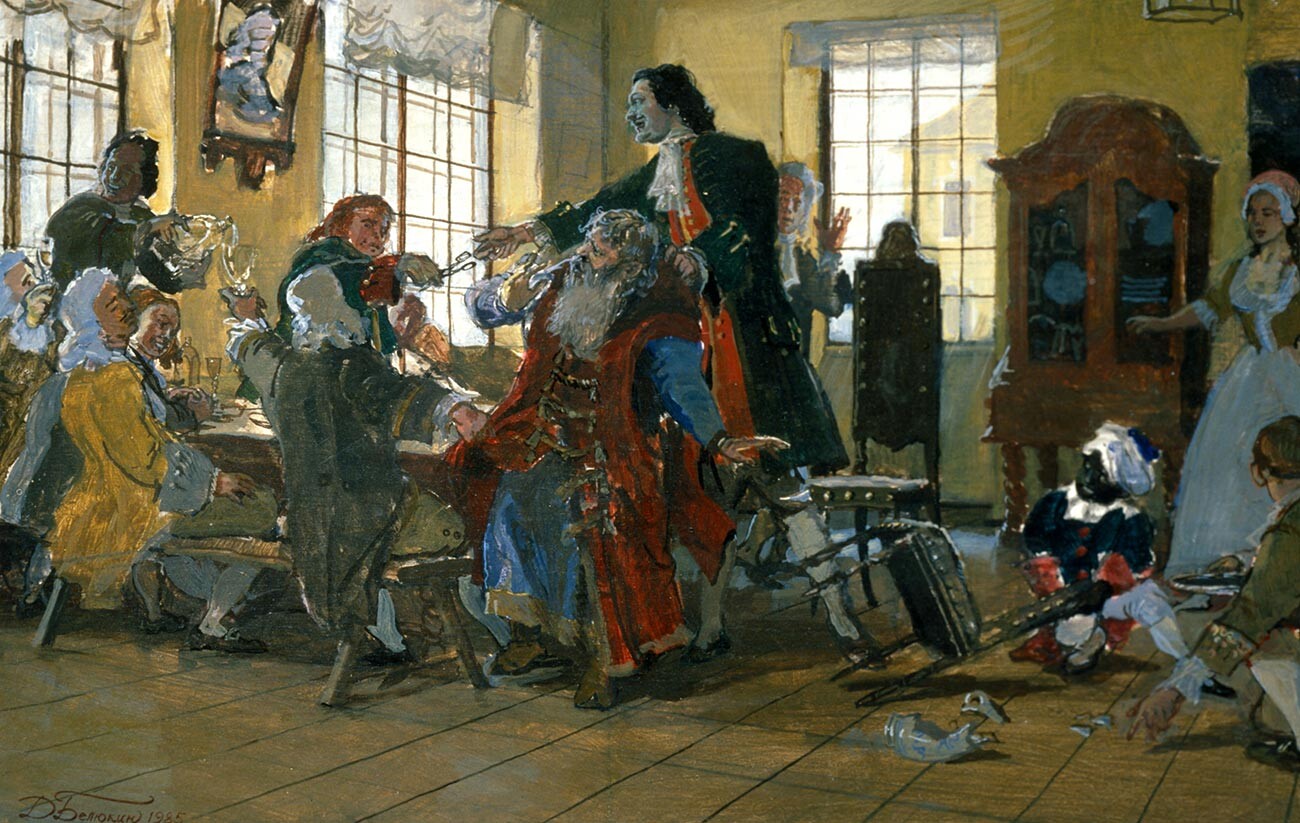
"Peter cuts the boyars' beards," Dmitry Belyukin, 1985
Andrey Solomonov/SputnikAfter returning from the Great Embassy, Peter gathered his boyars in his Preobrazhenskoe palace in Moscow and literally cut their beards, which happened on multiple occasions. This is famously known in Russia as Peter’s “beard reform”.
However, cutting or trimming beards wasn’t new for Russians – the fashionable youth of Moscow learned beard cutting from foreigners, who came to work and trade in Russia, mostly from Englishmen. So, Russians had been trying to cut their beards earlier in the 17th century, but the laws actually didn’t allow them to do so, because cutting a beard was considered un-Christian by the Orthodox church!
So, when Peter the Great cut the boyars’ beards, he was changing the looks of the most conservative and traditional people in the country and making them look more European. But he wasn’t the first to discover shaving in Russia, of course.
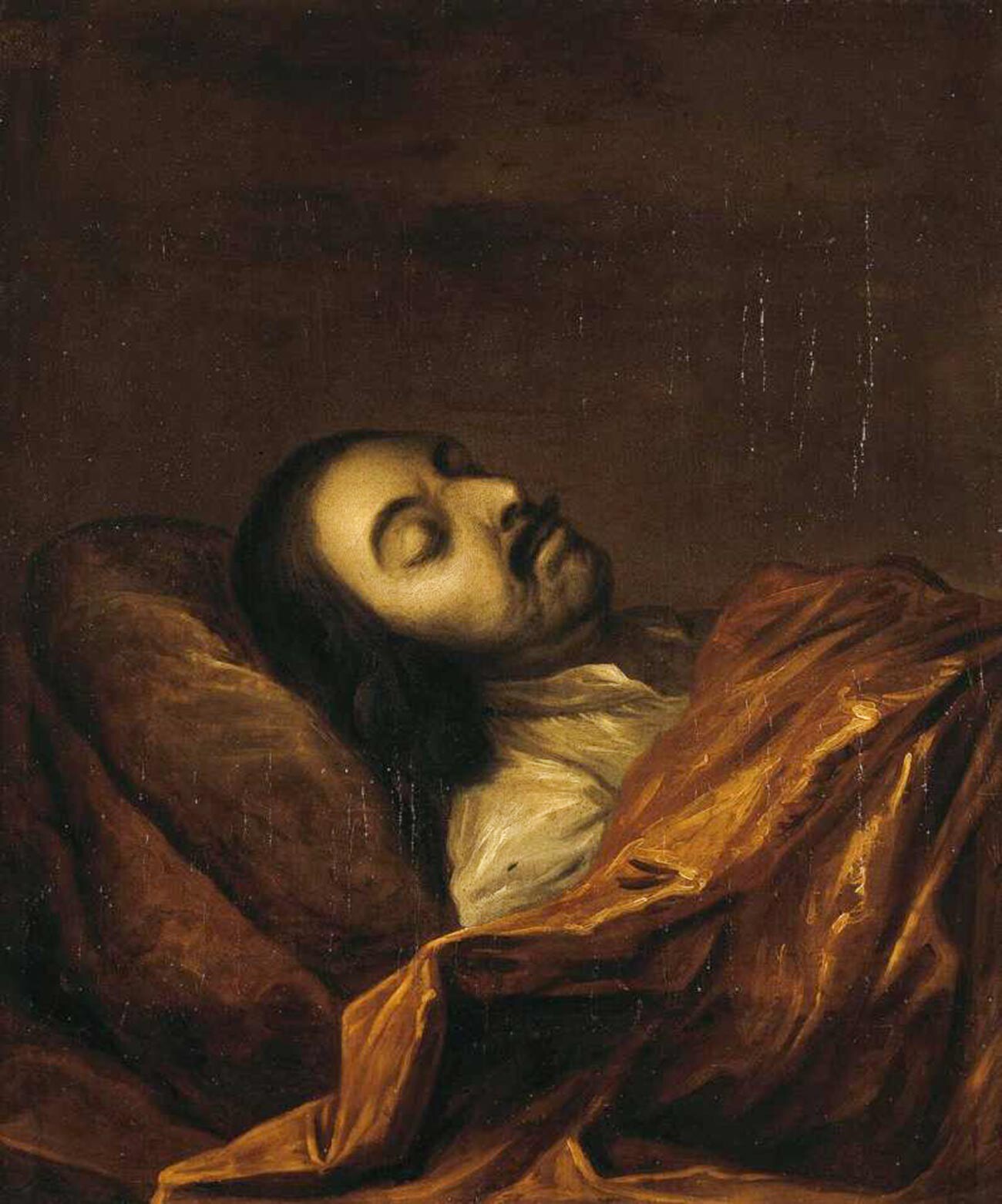
Peter on his deathbed
Ivan NikitinPeter was promiscuous during all his life – the fact that he didn’t hide from his second wife, Catherine I. There were more than six known fiancees and, judging from the documents from the time, innumerable “little intrigues” that Peter was involved in.
In 1717, for example, he writes to Catherine from the town of Spa, where he was healing: “As during the water drinking procedures, the doctors forbade me my home entertainments, I send my mistress to you then, because I wouldn’t be able to stop myself if she were near me.” The possibility of Peter acquiring some venereal disease during the course of his life cannot be ruled out.
The causes of Peter’s death are related to his problems with urinating that became obvious around 1722-1723. He eventually died of complications following bladder inflammation. But no autopsy was performed after Peter’s death.
Contemporary doctors that studied the conclusions of Peter’s medics are unanimous: this wasn’t syphilis, but it could be chronic hepatitis or gonococcal urethritis, an infection caused by gonorrhea. However, a concrete answer couldn’t be found.
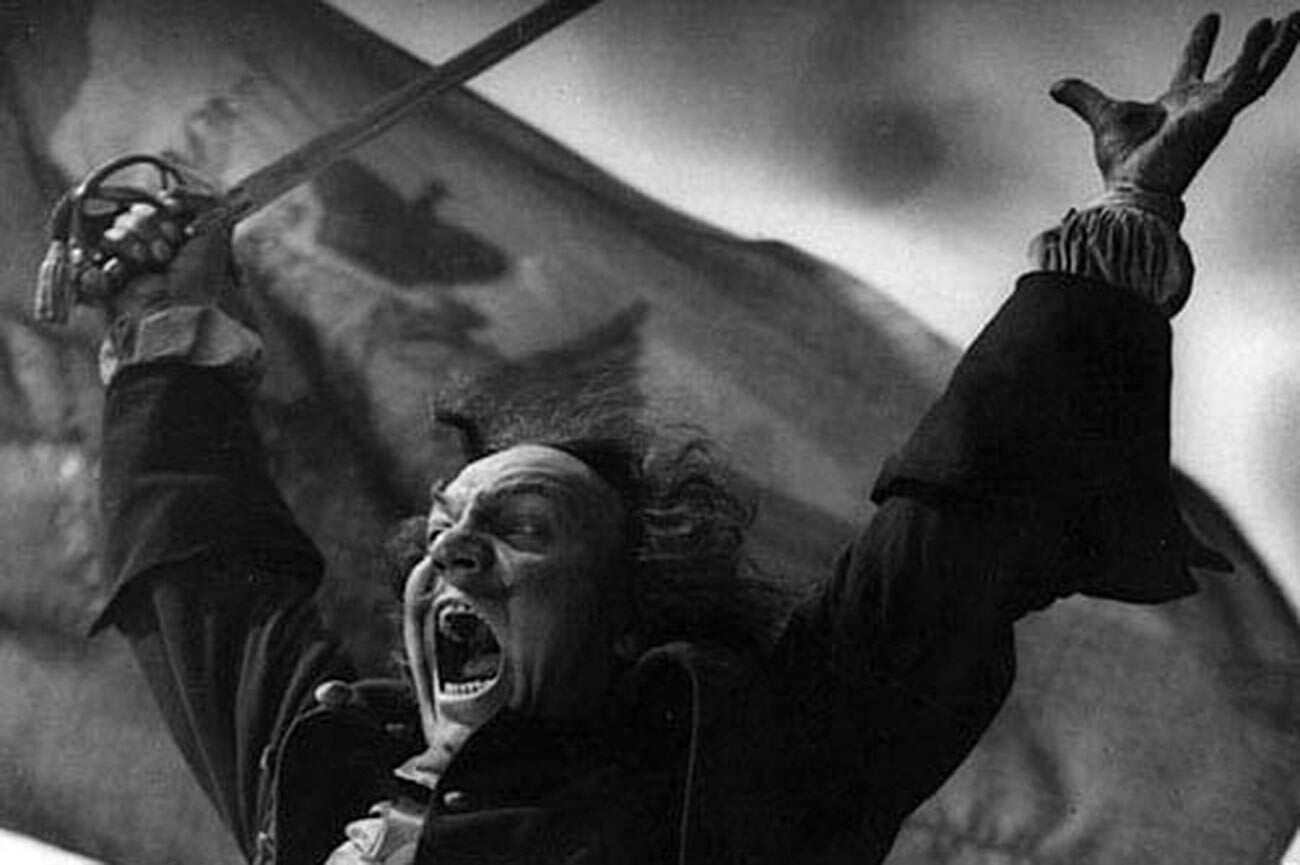
A still from "Petr Pervyi" movie, 1937
Vladimir Petrov/Lenfilm, 1937Something was definitely wrong with Peter mentally and it was obvious to his contemporaries. In Russia, as well as during his trips to Europe, many people witnessed his seizures. Juel Just, the Danish envoy to Russia, described them: “His face was distinctly pale, distorted and ugly. He made grimaces and motions… spinning his head, rolling his eyes, twitching his arms and shoulders… This happens often, when he’s angry, receives bad news, upset or deep in thought.”
Apart from those seizures (or was it just a nervous tic?), Peter was famous for his fierce temper, bursts of rage and mercilessness towards those who disobeyed his orders.
Seizures could also be a sign of epilepsy. However, epilepsy progresses with time, causing intellectual disability, which definitely wasn’t the case with Peter, who almost single-handedly ruled a vast country to the last days of his life. However, his nervous tic and violent temper were most likely caused by a serious trauma he suffered at 10 years of age, when he witnessed the streltsy, the Moscow tsars’ royal guards, killing his uncles and relatives during an uprising.

"Assembly during Peter the Great's times," 1858, Stanisław Chlebowski
Stanisław Chlebowski“He aggravated his natural vehemence by drinking brandy in large doses, which he cleaned by himself and with great zeal,” Gilbert Burnet, Bishop of Salisbury, wrote of Peter the Great. Peter’s copious drinking was famous in Russia and abroad. Foreign envoys and diplomats knew that if they’re posted to Russia, they will most definitely have to drink with Tsar Peter and it was a hard task.
“His Majesty became very angry and ordered everyone at the table to drink a huge glass of Hungarian wine in his presence as a punishment,” Friedrich Wilhelm von Bergholz, a German courtier who knew Peter very well, wrote. Peter wasn’t shy of his drinking and personally confessed he sometimes drank until he lost his mind and memory: “I don’t remember how I left, because I was mighty delighted with the gift of Bacchus. This said, I beg everyone whom I have caused vexation to pardon me,” Peter wrote in a letter to his relative, Count Fyodor Apraksin.
In the Summer of 1717, Peter spent a month in the town of Spa (now located in Belgium), where the tsar healed by drinking mineral water after his long stay in France (and a lot of lavish dinners). What was peculiar is how Peter drank mineral water. “Sometimes, he drank an excessively large amount of mineral water, always mixing it with wine,” a witness wrote.
Judging by these numerous accounts, we can almost certainly say that Peter the Great was drunk almost every day – from being slightly drunk to being completely wasted. Which, however, didn’t stop him from being a great leader and ruling a great country.
Dear readers,
Our website and social media accounts are under threat of being restricted or banned, due to the current circumstances. So, to keep up with our latest content, simply do the following:
If using any of Russia Beyond's content, partly or in full, always provide an active hyperlink to the original material.
Subscribe
to our newsletter!
Get the week's best stories straight to your inbox